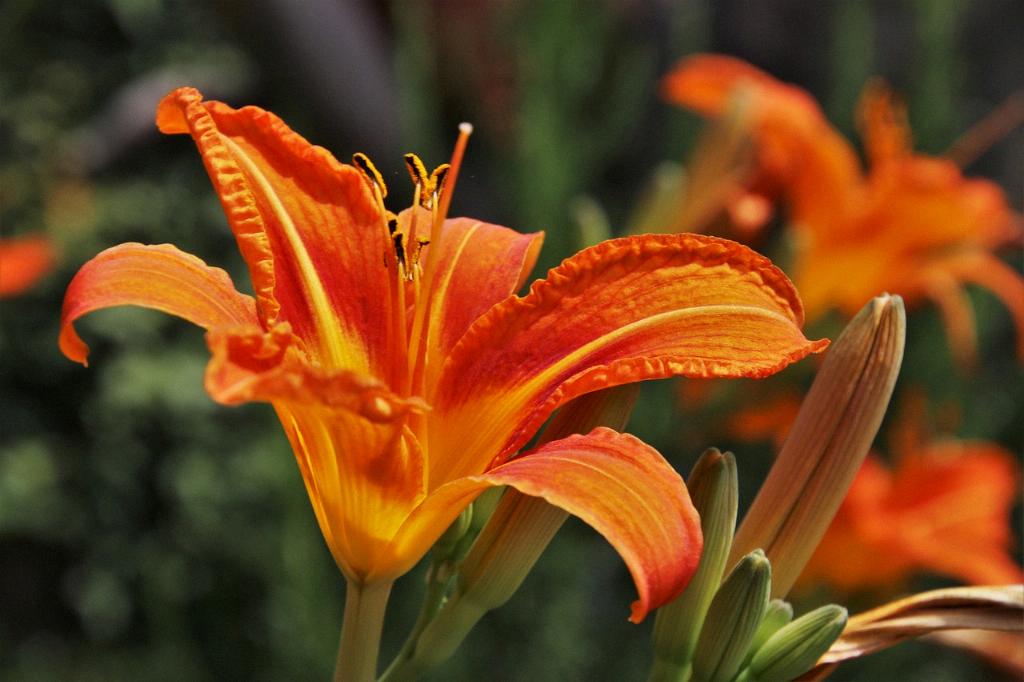It can be disheartening for any gardener to notice their daylilies not blooming as expected. Daylilies are known for their vibrant, colorful blooms that can brighten up any garden. However, when these beautiful flowers fail to bloom, it raises questions and concerns. Understanding the reasons behind why your daylilies are not blooming is essential to address the issue effectively.
Insufficient Sunlight: A Common Culprit
One of the primary reasons why your daylilies may not be blooming is the lack of sufficient sunlight. Daylilies thrive in full sunlight and require at least six hours of direct sun exposure daily to perform well. If your daylilies are not receiving adequate sunlight, they may produce fewer blooms or stop blooming altogether.
Poor Soil Conditions Impact Blooming
The soil conditions in which your daylilies are planted play a crucial role in their blooming performance. Daylilies prefer well-draining, fertile soil with good organic content. If the soil is compacted, lacks nutrients, or has poor drainage, it can hinder the blooming process of your daylilies.
Overcrowding and Competition for Resources
Overcrowding can negatively affect the blooming of your daylilies. When daylilies are planted too closely together, they compete for resources such as water, nutrients, and sunlight. This competition can lead to reduced blooming and overall poor performance of the plants.
Inadequate Watering and Drought Stress
Proper watering is essential for the optimal growth and blooming of daylilies. Inadequate watering or drought stress can significantly impact the blooming capacity of your daylilies. Ensure that your daylilies receive sufficient water, especially during hot and dry periods.
Effects of Improper Feeding and Nutrient Deficiencies
Daylilies require a balance of essential nutrients to support healthy growth and blooming. If your daylilies are not blooming, it could be due to improper feeding or nutrient deficiencies in the soil. Regularly fertilizing your daylilies with a balanced fertilizer can help address this issue.
Pest and Disease Infestations Impact Blooms
Pest infestations and diseases can weaken the overall health of your daylilies, affecting their blooming capability. Common pests that target daylilies include aphids, spider mites, and thrips, while diseases like leaf streak and crown rot can also hinder blooming. Proper pest management and disease control are essential for healthy blooms.
Effects of Improper Pruning and Deadheading
Pruning and deadheading play a significant role in promoting blooming in daylilies. If your daylilies are not blooming, it could be due to improper pruning practices or the failure to deadhead spent blooms. Regularly deadheading your daylilies and removing faded flowers can encourage new growth and blooming.
Weather Conditions and External Factors
External factors such as extreme weather conditions, including prolonged periods of heat or cold, can impact the blooming of your daylilies. Additionally, unforeseen events like late frosts or heavy rainfall can also affect blooming. Monitoring weather patterns and protecting your daylilies from adverse conditions can help maintain blooming.
Seasonal Bloom Cycles and Dormancy
Daylilies have their natural bloom cycles, often characterized by peak blooming periods during specific seasons. Understanding the seasonal bloom cycles of your daylilies is crucial in managing expectations regarding blooming. Additionally, daylilies may exhibit periods of dormancy where blooming is minimal.
Underlying Stress Factors and Transplant Shock
When daylilies experience underlying stress factors such as transplant shock from being moved to a new location, they may temporarily cease blooming. It is essential to provide adequate care and time for your daylilies to acclimate to their new environment and resume normal blooming patterns.

Overall Care and Maintenance Practices
In conclusion, the blooming of your daylilies can be influenced by various factors ranging from sunlight exposure and soil conditions to watering, feeding, pest management, and seasonal aspects. By addressing these potential issues and implementing proper care and maintenance practices, you can help ensure that your daylilies bloom beautifully and thrive in your garden.
